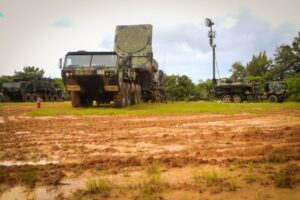The head of U.S. Army Japan said this week he believes there needs to be more integrated air and missile defense capabilities in the first island chain region to bolster deterrence against potential challenges from China, Russia and North Korea.
“My personal assessment is I think we would need a little bit more defensive capabilities because every day China’s building more capabilities, North Korea is developing more of their program for nuclear capabilities and then Russia has an intention to keep us out of the region too,” Maj. Gen. Joel Vowell said during a Defense One
discussion. “I don’t think we have enough right now. I think we need more. As the commander of U.S. Army Japan, I think that would be something I would champion for is more integrated air and missile defense protection in the first island chain for certain.”

Vowell noted that the Army has Patriot air defense systems in the region and Japan’s forces have their own ballistic missile defense and short-range air defense capabilities, while adding he wants to ensure the U.S. has “overwhelming overmatch” in both offensive and defensive capabilities.
More specifically, Vowell concerns over Russia include its production of more cruise missiles for coastal defense to potentially keep the U.S. out of the northern parts of the Indo-Pacific and China’s ongoing modernization push to expand its nuclear weapon arsenal.
“The quivers of the People’s Republic of China are very full with rocket forces and missiles. We have to make sure we have enough to protect and intercept in case they’re used. That’s the nature of deterrence as well,” Vowell said.
The Pentagon recently published its latest report on China’s military activities, including an assessment that Beijing may have an arsenal of at least 1,000 nuclear warheads by 2030, which would be an increase of five times over the 200 warheads the country is estimated to maintain currently (Defense Daily, Nov. 3)
Earlier this month, Army Secretary Christine Wormuth said the service may function “as the linchpin service for the joint force” in a potential conflict with China in the Indo-Pacific, to include providing integrated air and missile defense for fixed sites and mobile elements (Defense Daily, Dec. 1).